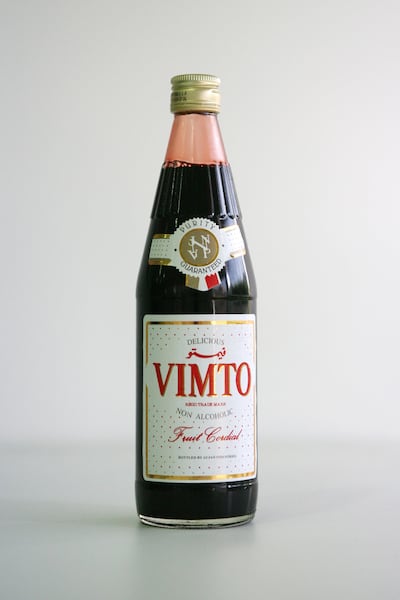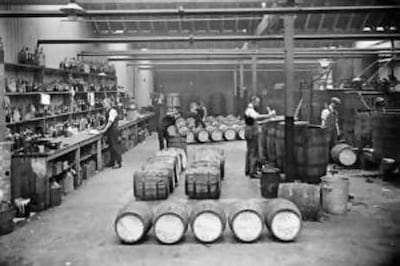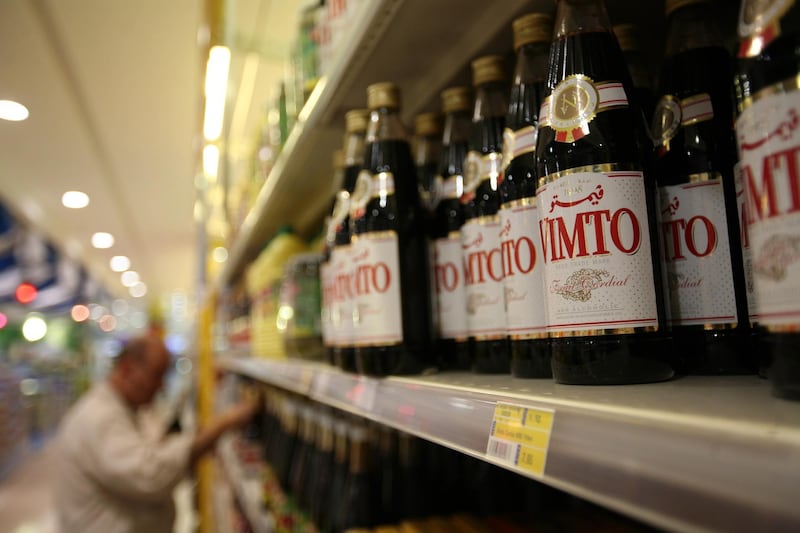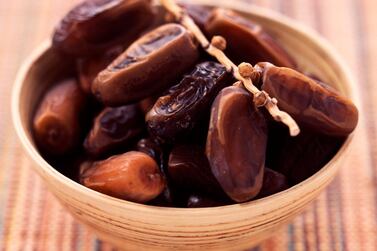I’ve become familiar with many of the UAE’s seasonal shifts. The parks teem with families in the winter; the streets bloom with flowers in the spring; and the cities start to empty out a little in the summer.
There is, however, one seasonal shift that is more predictable than all the others. This particular change occurs precisely three weeks before Ramadan, when Vimto, the hitherto relatively neglected fruit-juice cordial, suddenly makes a dramatic reappearance. Like an exotic migratory bird with purple and gold plumage, the drink returns en masse to take pride of place on the shelves of the nation’s supermarkets.
Popularity in the region
You won’t find any supermarket in the UAE – the Gulf even – that doesn’t place Vimto front and centre in the run-up to Ramadan. Some supermarkets attempt gravity-defying feats of retail engineering, creating massive purple towers – Burj Al Vimto? – as if in homage to the beverage.
The seasonal popularity of Vimto is also discernible from a glance at Google Trends – a tool for visualising internet search frequency. Enter "Vimto", then select any Gulf nation, and the graph produced looks like a cardiogram. There is a flat line of inactivity, regularly broken by massive spikes occurring each Ramadan. Confirmation that Vimto is alive and well. For further evidence of the drink's seasonal popularity, we looked at the UAE's Twitter data for 2015 (a total of eight million tweets). During Ramadan, there was more than a 1,000 per cent increase in the number of tweets mentioning the word Vimto.

But why has this plum-coloured beverage, concocted more than a century ago in England's industrial north, become such an enduring accompaniment to Islam's most holy month?
The history of Vimto
Vimto first arrived on the Arabian Peninsula almost 100 years ago, when Abdulla Aujan & Brothers, Saudi commodity traders, acquired the exclusive rights to import and distribute the beverage. I imagine that having a bottle of Vimto in the 1920s was a pretty big deal. Part of the drink's lasting regional popularity might be that, unlike many other imported luxuries, Vimto was here before the oil wealth. Vimto is not a newcomer; the drink earned its place at the iftar table and in the hearts of the populace a long time ago.
Another possible contributor to the drink’s success is that Vimto begins with the letter V. Arabic’s 28-letter alphabet has no letter V, so the drink’s name perhaps lends it an air of being exotic, sophisticated and appealing. Like those English speakers who pride themselves on being able to pronounce Hermes with an authentic French accent, I’m sure some Arabic speakers take similar pride in correctly enunciating the V in Vimto.
Health-promoting promises
The most significant factor behind the drink's popularity, though, has to be its roots in the UK temperance movement. Temperance was a popular social campaign, advocating prohibition, or at least restrictions, on the sale and consumption of alcoholic beverages. Manchester, Vimto's birthplace, had substantial connections to the temperance movement. For example, Maine Road, the previous home of Manchester City Football Club, was named in honour of the state of Maine, the first US state to outlaw alcoholic beverages, in 1851.

When Vimto was first served in the UK’s temperance bars in 1908, it was known as Vim Tonic. The name was chosen to highlight the drink’s supposed health-giving properties. Vim Tonic didn’t claim to give you wings, but it did claim to give you vim and vigour. Vimto’s dubious health-promoting promises and its early association with the temperance movement probably boosted the drink’s appeal in a region where western medicine was relatively scarce, and the consumption of alcohol had been restricted for centuries. I’m sure the drink’s high sugar content also helped seal the deal.
Today, when Vimto's maker, UK soft drinks group Nichols, celebrates rising profits, it is typically attributed to a surge in demand for Vimto in the Middle East in the run-up to Ramadan.
Last year, sales of the beverage were down on the 12 months before, which Vimto attributed to ongoing hostilities in Yemen, as well as "the timing of shipments to Saudi Arabia".
Vimto’s past, present and future appear to be inextricably bound to the fortunes of the Middle East.
Personally, I don’t like Vimto. It’s either too sweet or tastes of nothing at all. However, I will have an occasional glass during Ramadan, just to be sociable.








